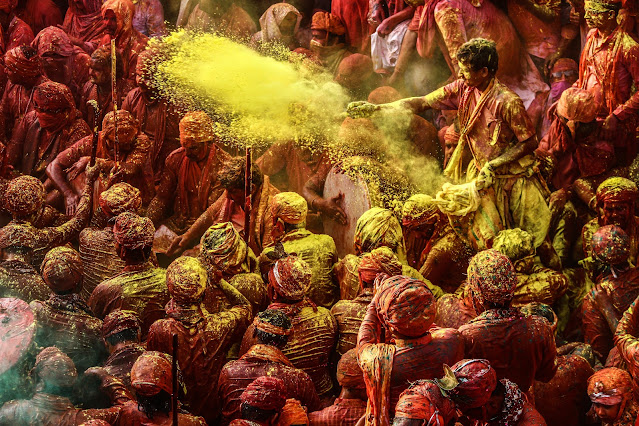Best Holi festival essay in English for Students | 500+ words essay on Holi
Why are we writing an essay on Holi?
This essay on "Holi" is created for student's help. We all know that in school whenever we got holidays, the teacher gave us holiday work to ruin our holiday, but In "2024's Holi" you should not have to waste your holidays on writing a long essay on "Holi", Just copy this essay, It will take only half an hour. In 2024 Holi will be celebrated on Monday, March 25.
Introduction
Holi is an annual Hindu festival celebrated with immense enthusiasm and fervor. Typically falling in March, it marks the arrival of spring and the end of winter. Holi is renowned for its exuberant display of colors, which has made it famous worldwide. People of all ages and backgrounds come together to partake in this colorful celebration, transcending religious and social boundaries
Holi, often referred to as the Festival of Colors, is a vibrant and joyous celebration that holds a special place in the hearts of millions of people, primarily in India and among Indian communities around the world. This ancient Hindu festival is not just about splashing bright hues of powder and water at each other but is a symbol of love, unity, and the triumph of good over evil. In this essay, we will delve into the significance, history, traditions, and cultural aspects of Holi.
Historical Origins
The origins of Holi can be traced back to Hindu mythology, and it is intertwined with several fascinating legends. One of the most popular stories associated with Holi is the tale of "Holika" and "Prahlad". According to Hindu mythology, King "Hiranyakashipu", a demon king, demanded that he be worshiped as a god. However, his son, "Prahlad", remained a devoted follower of Lord Vishnu. This enraged "Hiranyakashipu", leading him to order his sister, "Holika", who was believed to be immune to fire, to sit with "Prahlad" in a burning pyre. To everyone's astonishment, "Prahlad" emerged unscathed, while "Holika" perished in the flames. This event symbolizes the victory of good over evil, a central theme of Holi.
Another Holi legend involves the tale of Lord Krishna and Radha. It is believed that Lord Krishna, known for his mischievous nature, used to playfully drench Radha and the other gopis (milkmaids) with colored water and apply colored powders to their faces. This playful and colorful aspect of Holi is still reflected in the way it is celebrated today, with people engaging in playful water fights and smearing each other with bright colors.
Religious Significance
While Holi is renowned for its exuberant and playful nature, it is not merely a secular festival but holds deep religious significance, particularly in North India. It is celebrated with devotion and reverence. For many, it's a time to seek forgiveness, mend broken relationships, and renew bonds with loved ones. The throwing of colors during Holi is seen as an expression of love, unity, and the breaking down of social barriers.
In the lead-up to Holi, many communities hold religious ceremonies and prayers. People visit temples, seeking the blessings of the divine. The festival culminates in the grand celebration of colors, which reflects the joyous and colorful nature of life itself.
Conclusion
In conclusion, Holi, the Festival of Colors, is much more than a festival; it's a celebration of life itself. It embodies the values of love, unity, and the victory of good over evil. With its deep-rooted religious and cultural significance, as well as its adaptability to modern times, Holi continues to be a cherished and vibrant festival that brings people together, transcending boundaries and fostering a sense of togetherness. As we playfully drench each other in colors and partake in the festivities, let us also remember the deeper meaning of Holi – a celebration of love, harmony, and the triumph of light over darkness.





Post a Comment